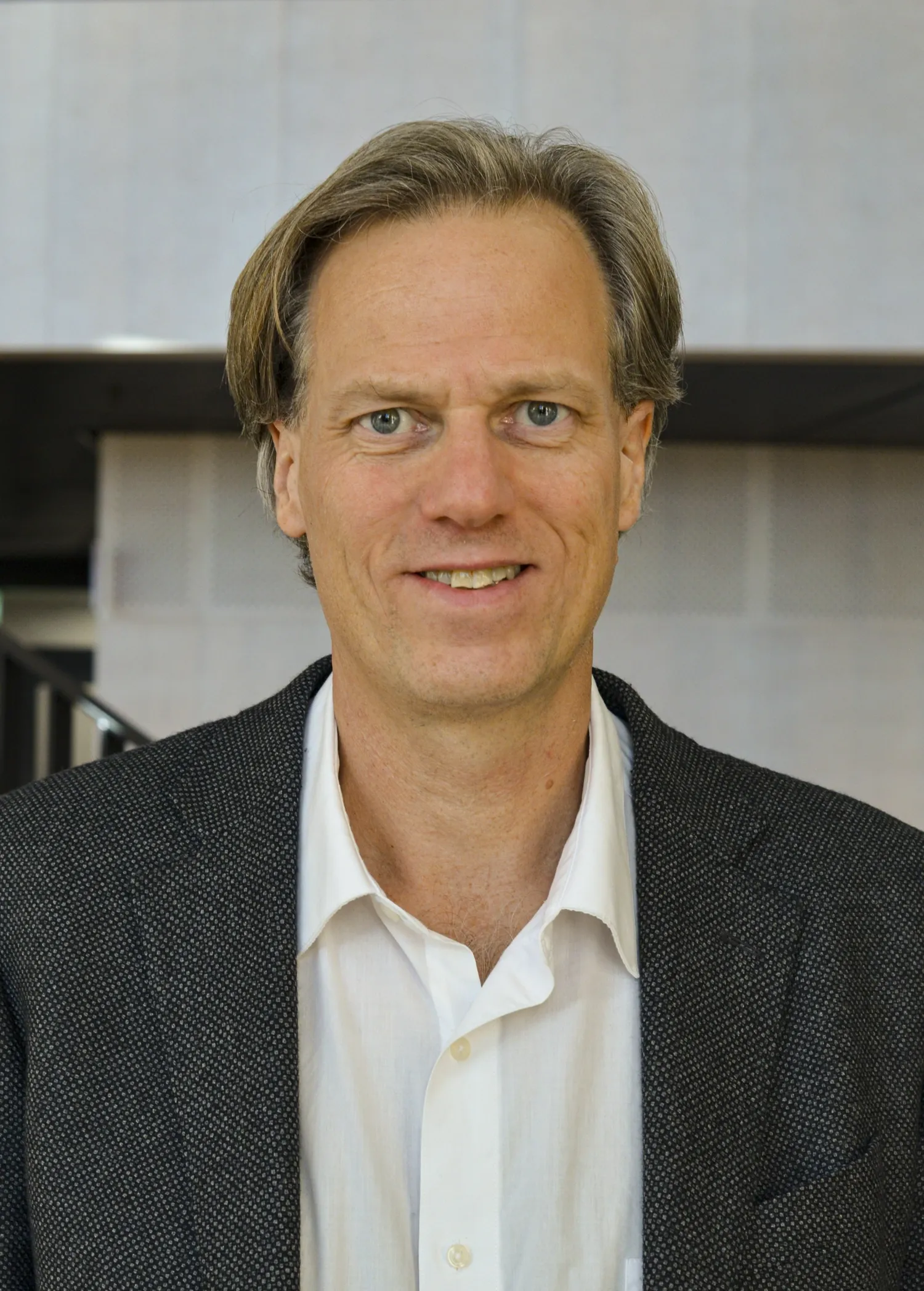David Baker, USA, has succeeded in creating entirely new proteins, the building blocks of life that control all biological processes in the body. He shares the Nobel Prize in Chemistry 2024 with Demis Hassabis and John M. Jumper of Google DeepMind, UK, who have developed the AI tool AlphaFold. "Now it can take minutes instead of years to get a good idea of what a protein looks like and thus how it may function," says KI professor Luca Jovine, who collaborated with DeepMind early on.
Proteins control all the chemical reactions that make life possible. In our bodies, they act as hormones, signalling substances, antibodies and building blocks of various tissues, among other things.
This year's Nobel Prize in Chemistry honours two important discoveries about proteins. One is the art of building customised proteins with desired properties, something that David Baker at the University of Washington, USA, achieved just over 20 years ago. He receives half of the chemistry prize 'for computational protein design' and has created proteins that can serve as drugs, vaccines, nanomaterials and sensors.
Crucial in medical research
The other half is shared between Demis Hassabis and John Jumper, Google DeepMind, 'for protein structure prediction'.

"It's about being able to predict what proteins look like in 3D and thus get insights into their functions and interactions with other molecules in the body," explains Luca Jovine, professor of structural biology at the Department of Medicine, Huddinge, Karolinska Institutet. "This is crucial for understanding biological processes, how diseases arise and how they may be treated."
His research focuses on the interaction between the egg and sperm during fertilisation and how mutations in egg coat proteins can cause female infertility, among other things. Shortly after Demis Hassabis and John Jumper presented the AlphaFold2 AI model in 2020, Luca Jovine's research group was one of the first to initiate a collaboration with DeepMind. Since then, they have published two scientific papers together with Jumper and colleagues.
Democratising a powerful tool
"It has been a pleasure to work with John, who is a very easy-going, friendly and down-to-earth person," says Luca Jovine. "It is both expected and well deserved that he and Demis Hassabis are awarded the Nobel Prize in Chemistry. I also think it's good that the prize is shared with David Baker, whose AI-model Rosetta was instrumental not only in the success of new protein design but also in advancing protein structure prediction. Moreover, the fact that the codes for both Rosetta and AlphaFold2 were made openly accessible has been crucial for the democratisation of these powerful AI tools, as well as the development of additional ones that build upon them".
Proteins are made up of amino acids linked together in long chains, which fold into specific three-dimensional structures that are crucial for their different functions. AlphaFold2 can predict the structure of millions of proteins based on the sequence of amino acids.
"Although it is not perfect, it's accuracy is generally very high, which makes it an incredibly valuable tool for all scientists studying proteins," says Luca Jovine. "It has taken biological and medical research by storm because in many cases we can now obtain a high-quality model of the structure of a protein in minutes instead of years."
Good complement to traditional methods
However, he emphasises that traditional methods that allow to experimentally determine the structure of proteins are still very much needed. They provide a higher level of detail and can tackle the structure of larger molecules. When AlphaFold2 was first presented, some researchers saw it as a threat to traditional methods like X-ray crystallography, cryo-EM and NMR; on the contrary, Luca Jovine immediately saw it as a great asset and a complement.
"By combining traditional methods with AI, we can speed up the process and get much more information" he says. "This knowledge can then be used to inform the development of new drugs or to predict whether a mutation in a protein is likely to lead to disease or not. These are fundamental questions that many medical researchers are addressing, whose clinical relevance makes the long-term potential of these AI tools really huge."
New drugs for mental illnesses

Per Svenningsson, senior physician and professor of neurology at the Department of Clinical Neuroscience, Karolinska Institutet, has used AlphaFold2 to identify drug candidates for mental illnesses such as schizophrenia and psychosis.
"It helps us to design new drugs in an efficient way and is a good complement to experimental methods," he says.
The team is using the technique to determine the three-dimensional structure of so-called G-protein coupled receptors, a type of protein in the body that are common drug targets. The researchers can then get an idea of how effectively different molecules bind to these targets and therefore what potential they have to be developed into new drugs.

"We have been able to design several extremely potent drug candidates for a target protein that we had no previous structural data on - something that would have been unattainable not long ago," says Marcus Saarinen, a PhD student in Per Svenningsson's research group.
More recently, they have also been able to use the AI technology to explore larger protein complexes, which is key to understanding how these targets function as part of a larger system.
"The technology is continuously improving and the possibilities in synthetic biology and drug development are extremely exciting," concludes Marcus Saarinen.






